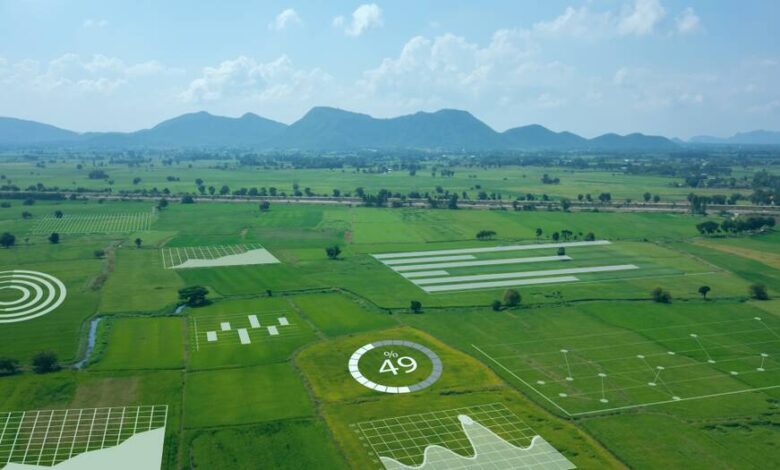Analytics in agriculture: A guide to data in the farming industry | Central Western Daily

In recent years, the use of data analytics has had a revolutionary influence on the Australian agricultural business.
This innovative technology enables Australian farmers to use massive datasets to improve all aspects of their operations, resulting in greater production, risk management and sustainability.
Farmers that embrace data analytics may be able to better manage Australia’s different topography and weather swings.
This article will address the benefits of analytics in Australian agriculture and outline a simple approach for introducing data analytics into farming practices.
From there, it aims to prepare professionals who are planning to pursue a Graduate Certificate in Business Analytics to be one step ahead in their future careers in the agriculture industry.
The benefits of analytics in Australian agriculture
Data analytics in Australian agriculture has several benefits, allowing farmers to improve their operations and efficiently manage the particular problems given by Australia’s different geographies and meteorological circumstances.
Here are some major advantages of data analytics in Australian agriculture:
Supports optimal crop planning
Australia’s agriculture covers a wide range of temperatures and soil types, necessitating careful planning. Farmers may determine the optimal dates to grow various crops in their respective locations by evaluating historical and real-time meteorological data.
This enables them to coordinate planting dates with the most optimal growth conditions, resulting in improved crop establishment and higher yields.
Allows for precision harvesting
Choosing the appropriate time to harvest is critical for increasing crop quality and production rates.
Data analytics can provide information on agricultural development phases, weather forecasts and market demand, allowing farmers to precisely time their harvests.
This can help farmers prevent overripening and early harvesting, ensuring that crops reach the market in perfect condition.
Helps with risk management
Natural disasters can pose significant threats to Australian farmers. Predictive analytics at that point can help predict these hazards by examining weather trends, historical data and other variables.
It enables farmers to plan for anticipated unfavourable occurrences by changing their farming operations, securing water supplies, or applying pest control measures.
Assists in resource optimisation
Data analytics utilisation helps farmers maximise their resources. Soil moisture sensors and meteorological data, for example, can alert farmers to the need for irrigation, minimising over- or under-watering.
This not only saves water and costs but also promotes sustainable farming techniques.
Improved livestock management
Data analytics has applications in animal production in addition to crop management. Farmers can detect health problems early, feeding regimens and enhance breeding programs by monitoring animal health and behaviour with sensors and data tracking.
This promotes healthier herds and more efficient output.
Enhances supply chain efficiency
Analytics can enhance supply chain efficiency by offering insights into market trends, demand changes and logistics.
Understanding market dynamics allows farmers to alter their production and distribution techniques to successfully meet demand, cut storage costs and reduce food waste.
Environmental impact monitoring
As environmental concerns are raised, data analytics enables farmers to monitor their environmental effects, such as carbon emissions and water consumption.
By examining this data, farmers can lower their carbon footprint and promote sustainable agriculture.
Market forecasting and pricing strategy
Data analytics can be used to estimate market trends and pricing. Based on this, farmers can maximise their revenues by strategically deciding which crops to produce and when to sell based on past market data and external factors such as global supply and demand.

The guide to data in the Australian farming industry in five steps
Integrating data analytics into farming practices in Australia involves several steps:
1. Data Collection: Australian farmers should start by gathering data from a variety of sources, including local weather stations, soil sensors, drones and on-farm IoT devices. This data gives information on several aspects of their agricultural activities, including soil moisture levels, temperature changes and plan health indicators. Collecting varied data points provides farmers with an overall view of their farm’s input and output.
2. Data Management: Data must be organised and securely stored. Farmers can easily manage and access their data using cloud-based systems or specialised applications. Effective data management entails classifying information, maintaining its quality and consistency, and protecting it against loss or unwanted access. This phase establishes the foundation for proper analysis and insights.
3. Data Analysis: Farmers can process and interpret their data using analytics tools that are supported by a strong data management system. This can involve the use of statistical models, ML techniques and agricultural-specific software. Analysing the data reveals patterns and trends, such as the best times to plant or harvest based on current weather and soil conditions.
4. Actionable Insights: Data can be used to guide decision-making. For instance, data can reveal specific areas that need irrigation or identify optimal planting and harvest times for different crops. These insights allow farmers to make accurate decisions that improve efficiency, productivity and sustainability.
5. Continuous Monitoring and Improvement: Data analytics needs continuous monitoring and refinement. Farmers should regularly assess performance metrics such as crop yields, water usage and resource consumption. Adjusting practices based on new data and insights helps farmers stay adaptable and proactive, leading to continuous improvements in farm operations.
Conclusion
Data analytics has the potential to transform the Australian agriculture business further by providing farmers with useful information and practical methods for increasing production and efficiency.
From planning planting schedules to minimising risks and waste, analytics enables farmers to make educated decisions that greatly enhance their operations.
Following the steps to integrating data analytics into the operational processes, Australian farmers can optimise the power of data to ensure a sustainable and prosperous future for their farms.



